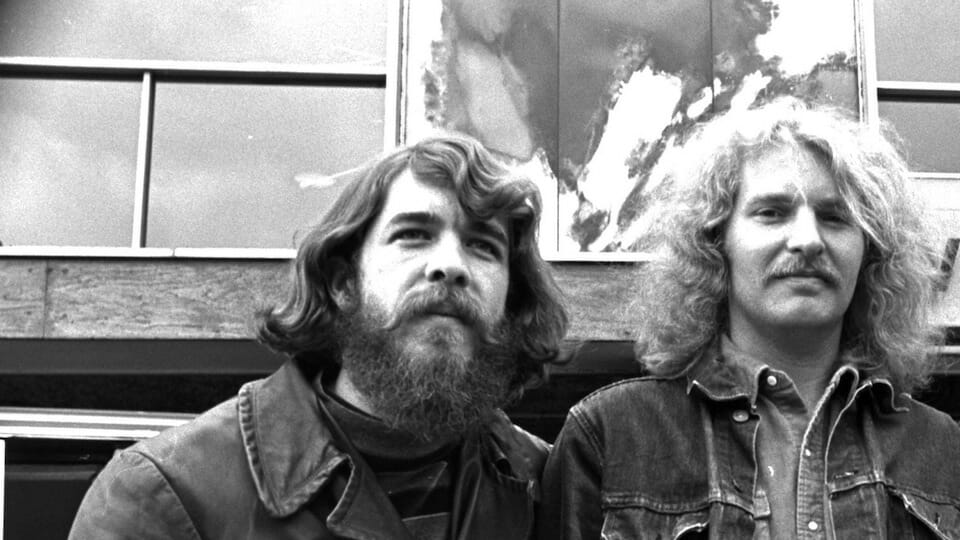Creedence Clearwater Revival (CCR) is one of the most iconic rock bands in music history. Formed in 1967, their unique blend of rock, blues, and swampy sound captivated audiences worldwide. The band members CCR played a crucial role in shaping the music industry during the late 1960s and early 1970s. Their timeless hits continue to resonate with fans across generations.
When we talk about band members CCR, we're not just discussing musicians but also pioneers who revolutionized the music scene. Their songs like "Proud Mary," "Bad Moon Rising," and "Fortunate Son" remain staples in rock music history. The band's legacy continues to inspire both aspiring musicians and seasoned artists alike.
In this article, we'll delve into the fascinating world of CCR, exploring the band members, their contributions, and the lasting impact they've had on the music industry. Whether you're a long-time fan or a newcomer, this article will provide valuable insights into the lives and careers of these legendary musicians.
Read also:Chase Customer Service Your Ultimate Guide To Contacting Chase Support
Table of Contents
- Biography of CCR
- Band Members CCR
- Early Years and Formation
- Musical Style and Influences
- CCR Hit Songs
- Legacy of CCR
- Reasons for Disbandment
- Solo Careers of Band Members
- Reunions and Performances
- Conclusion
Biography of CCR
Creedence Clearwater Revival, often abbreviated as CCR, was formed in El Cerrito, California. The band emerged from the ashes of another group called The Golliwogs. Their journey to fame was marked by hard work, dedication, and a unique sound that set them apart from their contemporaries.
Formation and Name
The name "Creedence Clearwater Revival" has an interesting backstory. "Creedence" was inspired by a friend of the band, while "Clearwater" came from a beer advertisement. The word "Revival" symbolized their renewed musical journey. This combination created a distinctive identity for the band.
Band Members CCR
Let's take a closer look at the band members CCR who contributed to their success:
Band Member Profiles
| Name | Role | Birth Date | Notable Contributions |
|---|---|---|---|
| John Fogerty | Vocals, Guitar | May 28, 1945 | Lead singer and primary songwriter |
| Tom Fogerty | Rhythm Guitar | November 18, 1941 | Backing vocals and rhythm guitar |
| Stu Cook | Bass | April 13, 1945 | Backing vocals and bass lines |
| Doug Clifford | Drums | May 21, 1945 | Drummer and backing vocals |
Early Years and Formation
The early years of CCR were filled with challenges and experimentation. The band members CCR initially struggled to find their footing in the competitive music scene. However, their persistence paid off when they signed with Fantasy Records in 1967.
Initial Struggles
Before becoming CCR, the band members performed under different names, including The Blue Velvets and The Golliwogs. These early experiences helped them refine their craft and develop the sound that would eventually define them.
Musical Style and Influences
The musical style of CCR was heavily influenced by blues, swamp rock, and traditional American music. Their sound was characterized by John Fogerty's powerful vocals and evocative songwriting.
Read also:Is Brotha Lynch Hung Still Alive Unraveling The Mystery Of The Iconic Rapper
Influential Artists
- Elvis Presley
- Chuck Berry
- Howlin' Wolf
These artists played a significant role in shaping the band's musical identity.
CCR Hit Songs
CCR produced numerous hit songs that remain popular to this day. Some of their most famous tracks include:
- Proud Mary
- Bad Moon Rising
- Fortunate Son
- Have You Ever Seen the Rain?
These songs showcase the band's ability to craft memorable melodies and lyrics that resonate with listeners.
Legacy of CCR
The legacy of CCR extends far beyond their chart-topping hits. They influenced countless artists and helped define the sound of rock music in the late 1960s and early 1970s.
Cultural Impact
CCR's music often addressed social and political issues, making them a voice for their generation. Their songs continue to inspire discussions about justice, equality, and the human experience.
Reasons for Disbandment
Despite their success, CCR disbanded in 1972 due to internal conflicts and creative differences. The band members CCR struggled to maintain harmony, leading to their eventual split.
Key Factors
- Creative control disputes
- Personal tensions
- Divergent career aspirations
These factors ultimately contributed to the band's dissolution.
Solo Careers of Band Members
After CCR disbanded, the band members pursued successful solo careers. John Fogerty, in particular, achieved significant success with albums like "Centerfield" and "The Blue Ridge Rangers."
Notable Solo Achievements
- John Fogerty - Inducted into the Rock and Roll Hall of Fame
- Stu Cook - Music production and session work
- Doug Clifford - "Cosmo's Factory" tribute tours
Each member carved out a unique path in the music industry, continuing to contribute to its evolution.
Reunions and Performances
While official reunions of CCR have been limited, the band members occasionally perform together at special events. These performances serve as a reminder of their shared history and enduring bond.
Memorable Reunions
- 1990 Rock and Roll Hall of Fame induction
- 2019 tribute performances
These reunions provide fans with a chance to witness the magic of CCR live.
Conclusion
Creedence Clearwater Revival's impact on the music world cannot be overstated. The band members CCR, through their exceptional talent and dedication, created a legacy that continues to inspire. From their early struggles to their chart-topping success, their journey is a testament to the power of music.
We invite you to share your thoughts and memories of CCR in the comments below. Feel free to explore our other articles for more insights into the world of music. Together, let's celebrate the enduring legacy of one of rock's greatest bands.
For further reading, check out reliable sources such as Rolling Stone and Billboard for in-depth coverage of CCR's history and impact.


